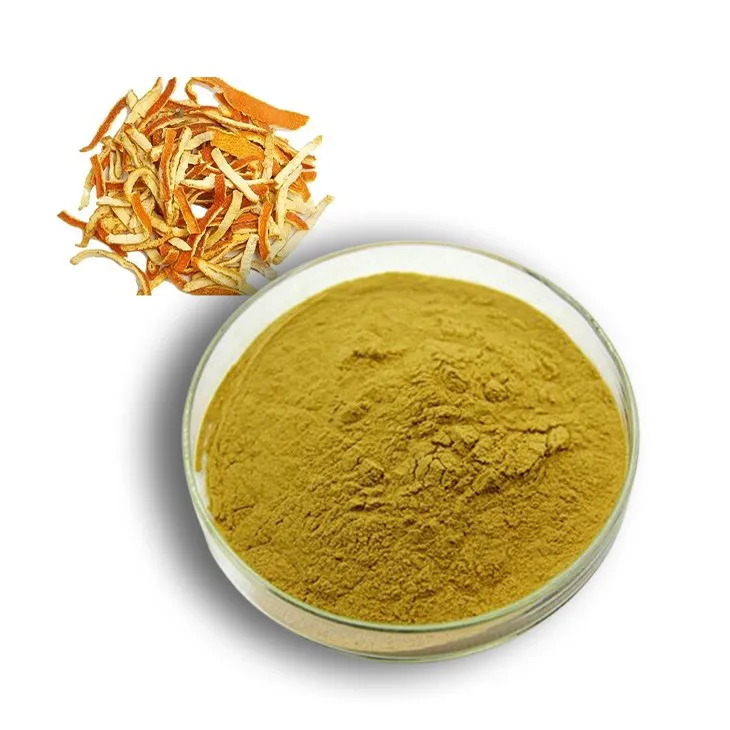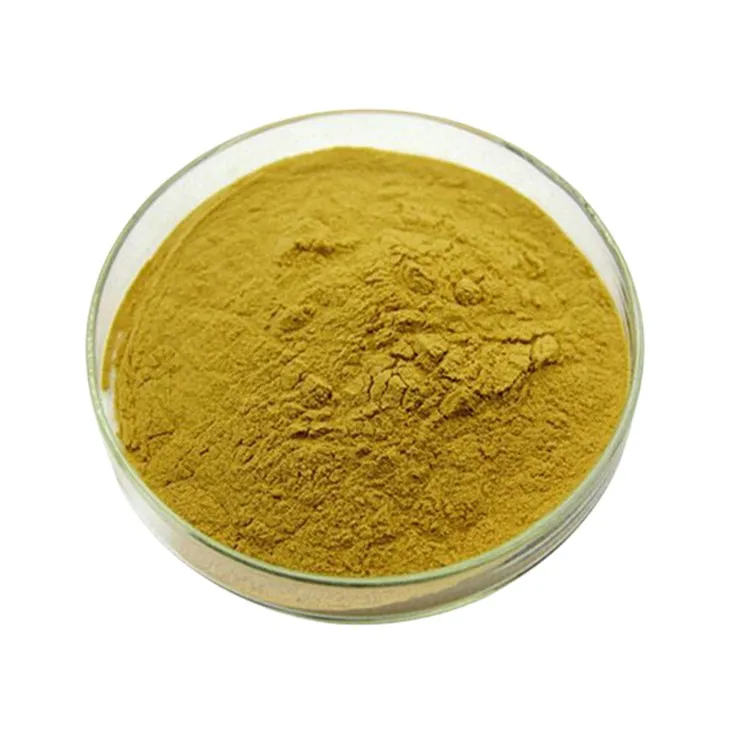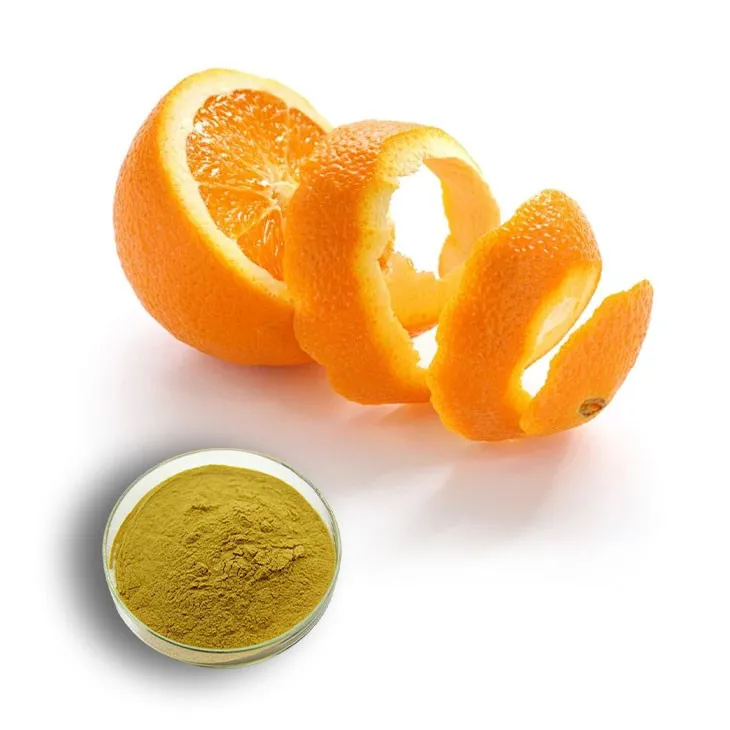- 0086-571-85302990
- sales@greenskybio.com
The process for extracting high - purity hesperidin from hesperidin.
2024-11-29

1. Introduction
Hesperidin is a flavanone glycoside that is widely present in citrus fruits. It has attracted significant attention in various fields such as the pharmaceutical, food, and cosmetic industries due to its numerous beneficial properties, including antioxidant, anti - inflammatory, and cardiovascular - protective effects. High - purity Hesperidin is particularly desirable as it can enhance the efficacy and quality of products in which it is incorporated. This article will delve into the process of extracting high - purity Hesperidin from hesperidin, covering aspects such as raw material selection, extraction solvents, and purification procedures.

2. Raw Material Selection
2.1 Source of Hesperidin
The primary source of hesperidin is citrus fruits, such as oranges, lemons, and grapefruits. Different citrus fruits may have varying levels of hesperidin content. For example, oranges are known to be a rich source of hesperidin. When selecting the raw material, factors such as the variety of the citrus fruit, its geographical origin, and the season of harvest need to be considered.- Variety: Some citrus varieties may have a higher concentration of hesperidin in their peel or pulp. For instance, certain types of bitter oranges have been found to contain relatively high levels of hesperidin compared to other sweet orange varieties.
- Geographical origin: The climate, soil conditions, and agricultural practices in different regions can influence the hesperidin content in citrus fruits. Fruits grown in regions with optimal environmental conditions may have a higher hesperidin yield.
- Season of harvest: The maturity of the fruit at the time of harvest can also affect the hesperidin content. Generally, fully ripe fruits may have different hesperidin levels compared to unripe ones.
2.2 Quality of Raw Material
The quality of the raw material is crucial for obtaining high - purity hesperidin. Freshness is an important factor. Citrus fruits that are freshly harvested are more likely to contain intact hesperidin molecules. Additionally, the absence of contaminants such as pesticides, heavy metals, and microbial contaminants is essential.- Pesticide residues: To ensure the safety and purity of the final hesperidin product, it is necessary to use citrus fruits with minimal pesticide residues. This may involve sourcing fruits from organic farms or implementing strict post - harvest cleaning and purification processes to remove any pesticide residues.
- Heavy metals: High levels of heavy metals in the raw material can pose a risk to human health and also affect the quality of the hesperidin extraction. Therefore, it is important to screen the citrus fruits for heavy metal content and avoid using fruits from areas with high environmental pollution.
- Microbial contamination: Microbes such as bacteria and fungi can degrade hesperidin or introduce impurities during the extraction process. Thus, proper handling and storage of the raw material to prevent microbial growth are necessary.

3. Extraction Solvents
3.1 Types of Solvents
The choice of extraction solvent plays a vital role in the extraction of hesperidin. Commonly used solvents include ethanol, methanol, and acetone.- Ethanol: Ethanol is a popular solvent for hesperidin extraction due to its relatively low toxicity, high solubility for hesperidin, and its ability to be easily removed during the subsequent purification steps. It can effectively dissolve hesperidin from the citrus matrix, especially when used at appropriate concentrations. For example, a concentration of 70 - 80% ethanol has been shown to be effective in many extraction processes.
- Methanol: Methanol also has good solubility for hesperidin. However, it is more toxic than ethanol. Care must be taken when using methanol to ensure the safety of the extraction process and the final product. Despite its toxicity, methanol may be preferred in some cases where higher extraction efficiency is required, especially for samples with a relatively low hesperidin content.
- Acetone: Acetone is another solvent that can be used for hesperidin extraction. It has a relatively high volatility, which can be advantageous in the extraction process as it can be easily removed. However, it also has some limitations, such as its potential to cause denaturation of certain proteins or other compounds present in the raw material, which may affect the purity of the final hesperidin product.
3.2 Solvent Selection Criteria
When selecting an extraction solvent, several criteria need to be considered.- Solubility of hesperidin: The solvent should have a high solubility for hesperidin to ensure efficient extraction. This is related to the chemical structure of hesperidin and the polarity of the solvent. Solvents with appropriate polarity can better interact with hesperidin molecules and dissolve them from the raw material.
- Toxicity: The toxicity of the solvent is an important factor, especially when the final product is intended for applications in the food or pharmaceutical industries. Low - toxicity solvents are preferred to ensure the safety of the end - product. For example, ethanol is a more suitable choice for food - related applications compared to methanol due to its lower toxicity.
- Volatility: Solvents with high volatility can be easily removed during the purification process, which is beneficial for obtaining a pure hesperidin product. However, highly volatile solvents may also pose safety risks during the extraction process, such as the risk of fire or explosion, so appropriate safety measures need to be taken.
- Cost and availability: The cost of the solvent and its availability in large quantities also play a role in the selection. Commonly available and cost - effective solvents are more likely to be chosen for large - scale industrial extraction processes.

4. Extraction Process
4.1 Pretreatment of Raw Material
Before extraction, the citrus raw material needs to be pretreated. This typically involves washing the fruits to remove dirt, debris, and surface contaminants. The fruits are then peeled, and the peel is usually the main part used for hesperidin extraction as it contains a relatively high concentration of hesperidin. The peel may be further dried and ground into a fine powder to increase the surface area available for extraction.- Washing: Use clean water to thoroughly wash the citrus fruits to remove any external impurities.
- Peeling: Carefully remove the peel from the fruits, trying to avoid contaminating the peel with the pulp.
- Drying: Dry the peel under appropriate conditions, such as in a low - humidity environment or using a drying oven at a controlled temperature. The drying temperature should be carefully selected to avoid degradation of hesperidin. For example, a temperature range of 40 - 60°C is often suitable.
- Grinding: Grind the dried peel into a fine powder using a grinder. The finer the powder, the larger the surface area for extraction, which can improve the extraction efficiency.
4.2 Solvent - based Extraction
Once the raw material has been pretreated, the extraction process can be carried out. The powdered peel is mixed with the selected extraction solvent in a suitable ratio. For example, a ratio of 1:10 (peel powder: solvent by weight) may be used. The mixture is then stirred or shaken for a certain period of time to allow the hesperidin to dissolve in the solvent.- Mixing: Add the pretreated peel powder to the solvent in the appropriate ratio and mix thoroughly to ensure uniform contact between the powder and the solvent.
- Stirring or shaking: Stir the mixture continuously or shake it in a shaker at a suitable speed and for a sufficient time. This time may vary depending on factors such as the type of solvent, the fineness of the powder, and the desired extraction efficiency. Typically, a stirring or shaking time of 2 - 6 hours may be sufficient.
- Filtration: After the extraction, the mixture is filtered to separate the liquid extract containing hesperidin from the solid residue. Filtration can be carried out using filter paper, a Buchner funnel, or other filtration devices. The filtrate obtained is the initial hesperidin - containing extract.

5. Purification Procedures
5.1 Concentration of the Extract
The initial hesperidin - containing extract obtained from the extraction process usually has a relatively low concentration of hesperidin. To increase the concentration, the extract can be concentrated. This can be achieved through evaporation techniques, such as rotary evaporation. Rotary evaporation involves heating the extract under reduced pressure, which causes the solvent to evaporate while leaving the hesperidin in a more concentrated form. However, care must be taken during this process to avoid overheating, which could lead to degradation of hesperidin.
5.2 Precipitation
Precipitation is another method used for purifying hesperidin. By adding a suitable precipitating agent to the concentrated extract, hesperidin can be selectively precipitated out of the solution. For example, adding a certain amount of hydrochloric acid can cause hesperidin to form a precipitate. The precipitate can then be collected by filtration or centrifugation.- Centrifugation: If centrifugation is used, the mixture is placed in a centrifuge tube and spun at a high speed. This causes the precipitate to collect at the bottom of the tube, and the supernatant can be removed.
- Filtration: In the case of filtration, a filter paper or a membrane filter can be used to separate the precipitate from the remaining liquid.
5.3 Chromatographic Purification
Chromatographic techniques are highly effective for obtaining high - purity hesperidin.- Column chromatography: In column chromatography, the concentrated and partially purified hesperidin sample is loaded onto a column filled with a suitable stationary phase, such as silica gel or a resin. A mobile phase is then passed through the column, and hesperidin is separated based on its differential interaction with the stationary and mobile phases. Different fractions are collected, and the fraction containing high - purity hesperidin can be identified and isolated.
- High - performance liquid chromatography (HPLC): HPLC is a more advanced chromatographic technique. It can provide high - resolution separation of hesperidin from other impurities. By using a suitable column and mobile phase, and adjusting parameters such as flow rate and detection wavelength, highly pure hesperidin can be obtained. HPLC is often used for the final purification step to ensure the highest quality of the hesperidin product.
6. Conclusion
The extraction of high - purity hesperidin from hesperidin involves a series of complex processes, starting from the careful selection of raw materials, choosing the appropriate extraction solvents, and implementing advanced purification procedures. Each step is crucial for obtaining a high - quality, pure hesperidin product. With the increasing demand for hesperidin in various industries, continuous research and improvement in the extraction process are necessary to meet the market requirements and ensure the safety and efficacy of hesperidin - based products.
FAQ:
What are the key factors in raw material selection for high - purity hesperidin extraction?
The key factors in raw material selection for high - purity hesperidin extraction include the origin of the citrus fruits (as hesperidin is commonly found in citrus). Fruits from regions with consistent quality and high hesperidin content are preferred. The maturity of the fruits also matters; generally, fully ripe fruits may have a higher content of hesperidin. Additionally, the freshness of the raw materials is crucial to ensure the integrity of hesperidin and to avoid degradation or contamination that could affect the extraction and purity of the final product.
Which extraction solvents are commonly used for high - purity hesperidin extraction?
Commonly used extraction solvents for high - purity hesperidin extraction include ethanol. Ethanol is popular because it has good solubility properties for hesperidin and is relatively safe and easy to handle. It can effectively dissolve hesperidin from the raw materials. Another solvent that may be used is methanol, which also has a relatively high solubility for hesperidin. However, methanol is more toxic than ethanol and requires more careful handling. In some cases, a combination of solvents may be used to optimize the extraction process.
What are the advanced purification procedures in the extraction of high - purity hesperidin?
Advanced purification procedures in the extraction of high - purity hesperidin often include chromatography techniques. For example, high - performance liquid chromatography (HPLC) can be used to separate and purify hesperidin with high precision. It can effectively remove impurities based on the different retention times of components in the mobile and stationary phases. Another technique is crystallization. By carefully controlling the conditions such as temperature, concentration, and solvent composition, pure hesperidin crystals can be obtained. Recrystallization may also be carried out multiple times to further increase the purity of hesperidin.
How does the extraction process affect the quality of high - purity hesperidin?
The extraction process has a significant impact on the quality of high - purity hesperidin. The choice of extraction solvents can influence the purity and yield. If an inappropriate solvent is used, it may co - extract other substances, reducing the purity of hesperidin. The extraction temperature and time also play important roles. High temperatures for a long time may cause degradation of hesperidin, resulting in a decrease in quality. The purification procedures are crucial for removing impurities. Inadequate purification may leave contaminants in the final product, affecting its quality and usability in various applications such as in the pharmaceutical and food industries.
What are the challenges in the extraction of high - purity hesperidin?
One of the challenges in the extraction of high - purity hesperidin is the presence of interfering substances in the raw materials. These substances may have similar chemical properties to hesperidin, making it difficult to separate them completely during extraction and purification. Another challenge is the optimization of the extraction and purification conditions. Different raw materials may require different solvent ratios, extraction times, and purification methods, and finding the optimal conditions for each case can be time - consuming and resource - intensive. Additionally, cost - effectiveness is also a consideration. Developing an extraction process that is both efficient in terms of purity and yield and cost - efficient can be a complex task.
Related literature
- Optimization of Hesperidin Extraction from Citrus Peels"
- "Purification Techniques for High - Purity Hesperidin: A Review"
- "Hesperidin: From Raw Material to High - Purity Isolate"
- ▶ Hesperidin
- ▶ citrus bioflavonoids
- ▶ plant extract
- ▶ lycopene
- ▶ Diosmin
- ▶ Grape seed extract
- ▶ Sea buckthorn Juice Powder
- ▶ Beetroot powder
- ▶ Hops Extract
- ▶ Artichoke Extract
- ▶ Reishi mushroom extract
- ▶ Astaxanthin
- ▶ Green Tea Extract
- ▶ Curcumin Extract
- ▶ Horse Chestnut Extract
- ▶ Other Problems
- ▶ Boswellia Serrata Extract
- ▶ Resveratrol Extract
- ▶ Marigold Extract
- ▶ Grape Leaf Extract
- ▶ blog3
- ▶ Aminolevulinic acid
- ▶ Cranberry Extract
- ▶ Red Yeast Rice
- ▶ Red Wine Extract
-
Ginger Extract
2024-11-29
-
Tongkat Ali Extract Powder
2024-11-29
-
Garcinia Cambogia Extract
2024-11-29
-
Bilberry Extract
2024-11-29
-
Carrageenan Extract Powder
2024-11-29
-
Konjac Powder
2024-11-29
-
Uridine-5'-monophosphate Disodium salt
2024-11-29
-
Reishi mushroom extract
2024-11-29
-
Pine bark Extract Powder
2024-11-29
-
Curcumin Extract
2024-11-29





















